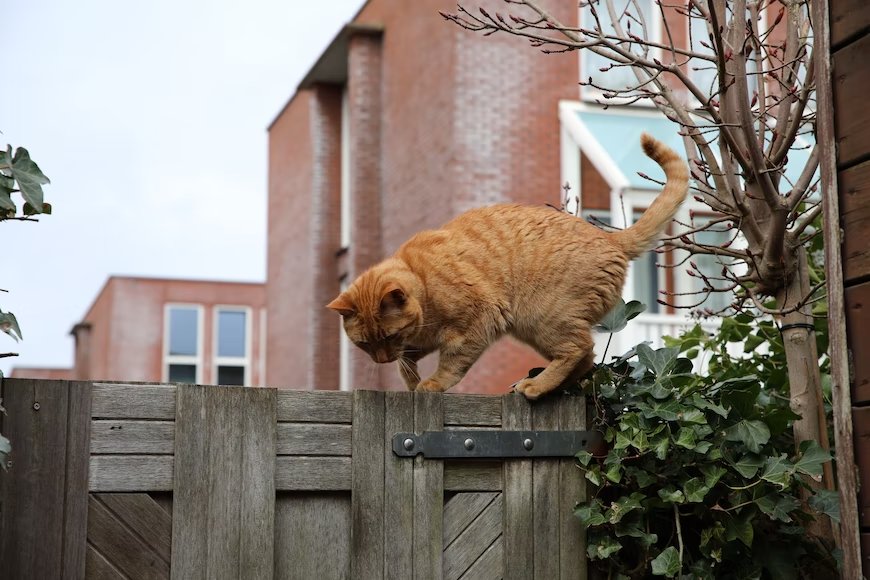 |
|---|
Image Source: Unsplash
There are a million reasons to own a cat. Cats can even benefit your health, as their cuddles are great for stress relief. They make great companions, as well, and they don’t require as much work as dogs and other more demanding pets. Sometimes, your furry friend may want to venture outside but even if you want to return the favour for their kindness, you should not let your cat leave the house unless you have taken the proper precautions.
To assist, we have created this guide of the steps to take before your cat’s first outdoor adventure.
Take Precautions Ahead of Time
It is generally understood that staying indoors is healthier for cats. Before you even think about letting your cat go into the yard, you need to take some time out there to look at the surroundings and ensure that the space is safe and that they won’t hit any unexpected obstacles.
For instance, it is a wise idea to check the temperature outside before you let your cat go. Temperatures above 86 degrees Fahrenheit can be dangerous levels of heat for pets, especially if they are exposed to a lot of direct sunlight. In addition to causing exhaustion, the sun will heat up the pavement at that temperature, and it could be dangerous for their paws. If your cat starts heavily panting or becoming extremely lethargic, then bring them inside immediately.
You will also want to check the plant life and your garden to ensure that there isn’t any dangerous mulch or flowers that can cause harm. Some plants can be toxic to cats, so consider replacing what you have with pet-safe garden alternatives like Gerber daisies or roses. Some forms of mulch can also be dangerous due to the mould that can grow, so stick to a safe, wood-based mulch.

Be Careful of Backyard Pests
While you need to be watchful of the plants in your yard, you also must be aware that there are many various pests back there that can cause harm. Many insects, including roaches, crickets, grasshoppers, and beetles, can be toxic if they are eaten by a cat. The culprit is primarily their exoskeletons, which can cause gastrointestinal and oral irritation. Since it may be hard to see these insects before it is too late, it is important to talk to your vet about a monthly medication that you can give your cat to avoid pain and discomfort.
Also, if you find an area with a lot of bugs, you can sprinkle a layer of diatomaceous earth over the area. Essentially, this is a pet-safe substance made out of fossils called diatoms that will dehydrate nearby insects that have exoskeletons.
It is also important to protect your pet from fleas, ticks, and other pests. If your cat is bitten by a tick, then it can cause skin infections and communicable diseases. To reduce the chance of these common pests attaching to your animal, avoid keeping your cat in the yard for a prolonged period of time. Also, pat down your cat every time they come back inside, and if you find a tick, remove it right away with a pair of tweezers.
Design Cat Doors Mindfully
If you determine that your yard is free of dangerous hazards and you have monitored your cat’s behaviour to ensure that they stay out of trouble, then you may consider installing a cat flap in your door. When you do, design your new home addition with your cat in mind so they can get in and out with ease.
You can train your cat to use the door flap by wiggling their favourite toy in front of the door so they approach and give it a try. Once they go through, reward them with a treat so they know that they did a good job, and they will do it time and time again.

If you are still cautious about your cat being outside, then consider having the cat flap that exits out into a DIY catio that will close them in and keep them secure. A good catio will include plenty of hiding and resting places along with proper flooring so they can get around with ease. Just be sure that there isn’t any harmful plant life in the space.
In the end, you can give your cat a chance to stretch its legs in the yard, but you have to take the proper precautions before you do. Consider these tips, and your furry friend can enjoy their next outdoor adventure.
We regularly write about all things relating to cats on our Blog Katzenworld!
My partner and I are owned by five cheeky cats that get up to all kinds of mischief that of course, you’ll also be able to find out more about on our Blog
If you are interested in joining us by becoming a regular contributor/guest author do drop us a message @ info@katzenworld.co.uk .

